Join the discussion below

Beth O’Hara is a Functional Naturopath, specializing in complex, chronic cases of Mast Cell Activation Syndrome, Histamine Intolerance, and Mold Toxicity. She is the founder and owner of Mast Cell 360, a Functional Naturopathy Practice designed to look at all factors surrounding health conditions – genetic, epigenetic, biochemical, physiological, environmental,... Read More

Dr. Joseph P. Smith is a board-certified chiropractic neurologist through the American Chiropractic Neurology Board and a fellow of the American College of Functional Neurology, with specialties in neurodegeneration and child developmental disorders. He has earned diplomate status through the International College of Applied Kinesiology. He earned his doctor of... Read More
- How head injuries can trigger MCAS
- How injuries can affect Mycotoxin Illness, Lyme, EDS, and CCI
- Gentle ways to work with structural issues
Related Topics
Anxiety, Brain, Brain Fog, Brain Inflammation, Chronic Illness, Chronic Inflammatory Conditions, Depression, Eds, Glial Cells, Head Injuries, Immune Cells, Immune Dysregulation, Inflammation, Insomnia, Lyme, Mast Cell Activation, Mast Cell Activation Syndrome, Mold Toxicity, Natural Killer Cells, Neurological Symptoms, Sympathetic Nervous System, Trauma, White Blood CellsBeth O’Hara, FN
Welcome back to this episode of the Reversing Mast Cell activation and Histamine intolerance, Summit. I’m your host Beth O’Hara of Mast Cell 360. And I’m delighted today to have with us Dr. Joe Smith. And this is going to be a really interesting interview in terms of how things like head injuries, things like instability in the upper neck, QRI malformations, and even EDS can affect mast cells. And one of the burning questions I’m gonna have today is can’s head injuries, be a root cause of mast cell activation. So hang tight with us as we get into this info. But let me share with you a little bit about Dr. Joe and his background. So he’s a board certified chiropractic neurologist, and he also earned a degree in psychology. He’s been involved in education for many years versus an adjunct faculty position at the University of Mary in North Dakota, and then a speaker through his own Atlas seminars. And his methods are used by the Hummingbirds Nest Collaborative School to help optimize children’s brain development and academic setting. And what’s unique about Dr. Joe’s that he listens to every patient to find the root cause of their struggles, emphasizing the process, not a protocol, uses every tool to available, to help patients find their path to recovery. And where I’d love to start… Well, first let me just say welcome, so glad that’s your-
Joe Smith, DC
Thanks, great to be here, yeah.
Beth O’Hara, FN
And where I wanna start is just help people understand that with chiropractic neurology, this is a whole different field. We’re not talking about people are coming into your office, they’re getting their neck cracked and they’re back out again in five minutes, you’re doing this really in depth look, and particularly with people who have these upper neck instability, like I’ve had head injuries and things like that. That neck adjustment is way too intense for us and that population, fine for some people, but not right for those of us who… I felt a long time, like my head was hanging on by a string and with the ligament damage, it kind of was. Can you share more about one? How did you get into this field and what is chiropractic neurology for people aren’t familiar with this?
Joe Smith, DC
So chiropractic neurology is a subset or a additional credential after chiropractic certification or doctor of chiropractic, where we have extensive training in neurology and how that influences the rest of the body. And in a more of a traditional chiropractic sense, we’re looking at orthopedic issues and musculoskeletal issues. And in a chiropractic neurology sense, we’re really interested in how the brain regulates those things. And there are definitely cases, and that’s what we’re talking about today, where a chiropractic adjustment to the neck especially would be contraindicated. Yet there are other modalities out there that could be extremely useful and being able to do a neurological exam and correctly stimulate or activate the brain networks to help them stabilize their neck would be more appropriate.
Beth O’Hara, FN
I wanna get into, why this is important. So many times, people with mast activation, with mold toxicity and Lyme, I’m amazed when I’m going through these cases and like you, I do a really in depth case history. And I wanna see, were you ever in any car accidents, you had any whiplash, did you play soccer when you were 10 years old? Did you get hit in the head with the ball a bunch of times? And I wanna see what was going on with these brain injuries that can play a role in these chronic inflammatory conditions. Because most of the time people are just going, okay, brain inflammation, let’s go gaba, let’s go theanine, let’s throw some baicalin, some magnesium threonate at it and try to calm that inflammation down. But in my own case I had, and I know I’ve shared this with you.
I was hit kicked in the head by a horse when I was nine. I had these car accidents with the whiplash, I have EDS. We found out on a specialized MRI that I had a key malformation that was keeping my cerebral spinal fluid from draining. And then from all that instability, I had a pannus which is that blister that can form on the brainstem, also keeping from draining. And I hadn’t realized until we found all of that, how much that was a missing root piece or root cause in my mast activation and healing from lime and mold toxicity. So I had this massive supplement protocol to keep me functional because it was like my brain just couldn’t function. Can you dive into that more and how these types of things… Just flesh that out for us? How can this play a role?
Joe Smith, DC
Well, people that have mast cell activation syndrome are really familiar with the neurological manifestations. They may have vertigo, they may be depressed. They may have insomnia, really classic things, anxiety.
Beth O’Hara, FN
Brain fogs-
Joe Smith, DC
Brain fog. Yeah, they hurt everywhere, right? They’re super tired, their arms feel heavy. Their limbs feel heavy, their legs feel heavy. They don’t have much stamina or endurance, their memories terrible. They may have a difficult time speaking or articulating what they wanna say. All those things can start happening. Their vision can be affected by that. And so we know that let’s say you have Lyme or you have mold, or you have other things driving mast cells. We know that you’re gonna release histamine. And we know that histamine can get into the brain. And when it gets in the brain, it can activate these immune cells in the brain called glial cells. And those glial cells actually turn down the output of the brain. And so that you get decreased output of the brain, which then exacerbates the neurological symptoms. So that’s what happens. So you can get a bottom up absolute mast cell activation, neurological phenomenon.
But what if the head trauma was first? So like you said, being kicked in the head when you’re a kid by a horse, what happens is the damage to the brain leads to an escape of something called the sympathetic nervous system. So the brain, 90% of it, its job is to regulate stress. And so if the brain’s injured, the simple discussion is stress escapes and that escape of stress causes mast cell to release. And then now the mast cell release goes and affects the brain. The brain goes down, which causes more mast cell. And so now you have somebody that has this vicious cycle of immune activation below the brain that gets into the brain, and then the brain decreases function, which then creates more immune dysregulation. And then they’re off to the races with a vicious cycle and going in and taking a million supplements might help some of the downstream effects of that. But if there’s a brain injury that isn’t rehabilitated properly or compensated for, then that’s their future. It’s piles and piles of supplements with maybe no result or limited result. And once you stop taking them, it may come back and it can be pretty demoralizing, especially for folks that don’t tolerate supplements.
Beth O’Hara, FN
It was really hard. There was a period of time, I couldn’t tolerate any supplements. I was so sensitive and I couldn’t work. I could hardly read a book. And then once I got the sensitivities a little improved and I was able to start, I just had to pile more and more on to get my brain to work. And if I forgot to take my supplements, Dr. Joe, oh my gosh, I couldn’t hardly form sentences, I stutter and sometimes people might be able to see me on a podcast before we got this kind of figured out and see where I’d have these kind of brain skips and things like that. So we talked about that, that can be a root cause for mast activation, that it can create mast activation, which we’re not talking about enough, my opinion in the mast world. And we need to be looking at this more. And then it can come along later as well. So we could have mast activation, they could have some mold toxicity, some Lyme that they’re keeping managed, and then a head injury could be open the floodgate, so to speak and-
Joe Smith, DC
Absolutely, it’s really interesting. So imagine a part of your brain is supposed to help your immune system do its job. And that part of your brain is injured. So now what happens is it kills a bunch of immune cells. So your bone marrow makes these cells, but then if you’re shifted into a fight or flight response, your body’s like, you know what? I don’t need these right now, I need to run from something. I need more energy to run, I need more adrenaline to run. So I’m just gonna kill all these white blood cells because they take a lot of energy. And those end up being what are called natural killer cells and TH 1 cells. And when those are down, then we’re more likely to get Lyme and we’re more likely to get mold. So let’s say two people walk into a moldy hotel and spend the weekend, the person that has a head trauma-
Beth O’Hara, FN
It sounds like this sort of a joke.
Joe Smith, DC
I know, right? It’s more likely, and it is kind of, it could be, but unfortunately so many people, right? And so they walk into a hotel, they spend the night, that hotel had a condensation of moisture from the swamp cooler or the air conditioning system in the duct, it created a little bit of a black mold. We know that within six hours, black mold can break down the blood brain barrier. So they spend one night in the hotel. The person that has adequate natural killer cell, and TH 1 responses are unlikely to get an infestation of mold in their body. And the person that doesn’t have those is going to wake up the next morning with brain fog. They may wake up the morning with like rapid heart rate. They may have acid reflux, they may feel depressed. They may feel completely hungover and they don’t know what the heck happened. All they did is go to bed. And so now that person stuck with mold, the mold is gonna create all these mast cell activations, which is gonna negatively impact the issue that made them vulnerable. So that’s when that vicious loop gets activated, for sure.
Beth O’Hara, FN
And that makes a lot of sense too, in terms of why some people get bitten by ticks that carry these tickborne infections, they never develop symptoms, or they might not develop symptoms until 20 years later, an head injury could tip them over into, not being able to… Their immune system function properly to keep that at bay. So that in addition, and we know that there’re mast cells that all the nerve endings or mast cells along the nerves and the mast cells are really the interface between the nervous system and the rest of the body. And then when we have inflammation, the brain, the mast cells will migrate across the blood brain barrier and higher concentrations.
Joe Smith, DC
100% and it’s bidirectional. So yes, a mast cell can irritate a nerve root in a nerve ending causing like burning pain or itchiness, right? But a nerve that is neuro genetically inflamed because the brain isn’t doing its job actually will stimulate a mast cell to release. So it’s bidirectional. And with an exam you can really determine which is which, or if both things are happening.
Beth O’Hara, FN
Oh, that’s interesting. Can you tell us any… I mean, I know everybody’s different, but are any kind of big picture pieces on how you can tell that on an exam?
Joe Smith, DC
Yeah, so like everybody do this later. Okay, when you have time, go look in the mirror and look at your pupils, okay? Is one pupil bigger than the other? Or if somebody ever told you that one pupil’s bigger than the other? That would suggest that on that side of the brain, you have more sympathetic tone, that side of your body, you have more sympathetic tone. You might find that when you do like a blood pressure response, that your blood pressure’s higher on that side, you might find that that’s a side of your body, that you’re more likely to get runners knee or golfer’s elbow or plantar fasciitis. You may find-
Beth O’Hara, FN
Pupils more constricted on that side?
Joe Smith, DC
More open.
Beth O’Hara, FN
More open on this side, okay.
Joe Smith, DC
So when we’re like really excited about something or stressed out or people will dilate, right? So that dilation is a really easy way to look at the brain. And so, I can make that observation at the bedside, but there’s actually diagnostics that we can use to qualify that and quantify it more specifically, so that we can monitor progress in the absences had been changed. But really like you could also go out the mirror and say, ah, ah, and look at the little arches in the back of your throat. And if one side goes up higher than the other, the side that the arch is lower on, could be the side that you’re having an increased sympathetic tone. And it could mean that you have a neurogenic problem, that’s activating your mast cells. You could do something like this where you just go left side versus right side. And if they’re significantly different, that could mean that the, for example, on the left brain on this side, ’cause it’s my right hand, it could mean that my cortex is down on that side. 90% of that cortex is supposed to fire into the brain stem to calm down inflammation in sympathetic tone. So a simple test like finger to thumb could be the doorway that opens up an entire case management.
Beth O’Hara, FN
Yes, you did really quickly.
Joe Smith, DC
Yeah, everybody just go like this. Okay, as fast as big as you can, fast as you can 10 times, and this big as you can fast as you can 10 times. And if one side feels like really stiff and kind of slow, or you’re not able to keep it up nice and big, that could be an indication that the cortex on the other side, isn’t working very well. And sometimes people will be like, well, yeah, I’m right-handed. But even though they’re right-handed, they’re having a hard time at the right hand. That’s just one manifestation of a motor aspect of a brain issue. But there are so many networks, sense of smell, hearing, sense of taste. Like we said, elevation of the pallet, swallowing, moving the face, moving the different limbs like shoulders and hips, and all those things relate to different networks. And so with an exam, we can actually key in on where the issue is, and that helps us select therapies that are gonna make sense.
Beth O’Hara, FN
And that part you’re talking about with the soft palette at the back, when you stick your tongue out. I just wanted to show people, you need to stick your tongue out and go staccato, ah, ah, ah, ah, ah, is that how you do it?
Joe Smith, DC
Yeah, or you can sustain it and just go, ah, and what you should see is that the both sides of the back of your throat… Not the little things sticking down, but both sides of the back of your throat will make these little arches and they should go up equally. And then also if you just stick your tongue out and you stick your tongue out in the mirror and it goes off to one side a little bit, that could suggest that the nerve that controls the tongue on that side, isn’t quite as strong as the other side. And that could also suggest an issue in the lower brain stem, which receives its signaling from the brain, is allowing a sympathetic or fight or flight escape, which is allowing this entire constellation of events that we talked at the beginning about to happen.
Beth O’Hara, FN
And we know that the vagal nerve is involved in some of that soft palate movement. And we talk a lot about the role of the vagal nerve with mast cell activation. And then there are these other cranial nerves that you’re… So you’re really expanding this conversation, these other cranial nerves, the brain stem, these other parts of the brain. And we’ve talked a good bit also in terms of the nervous systems role with mast cell activation and the immune system in general, because of that constant communication. And that if we are in this heightened sympathetic response, we’re not in the healing rest parasympathetic. And we have to calm the mast cells, we have to go over to parasympathetic. So I’m thinking about how I started meditating at 19 and I was a seasoned meditator, but once I really, I had another big mold exposure and my health started degrading the worst. I could not meditate my way out of that, Dr. Joe. I mean, the anxiety was so intense and then people would tell me it’s just in your head or the worst would be… I’d be told, well, you wanna be sick. And I know a lot of people hear this, but that’s not the case. Can you speak to that part? And I know that’s such a common experience and it’s just heartbreaking.
Joe Smith, DC
Well, it is, because it’s not in your mind. And look, there are certainly cases and this is kind of in a popular position. But there are certainly cases where I’ll do an exam and I’m not seeing a lot of neurological sequela. I’m not seeing a lot of neurological exam findings. And there is such a thing as an expression of libido or tensions that approach sickness or approach health and connection differently that are psychodynamic like an inner working of the psychological mind. It absolutely happens. But if I do an exam and I see a ton of neurological exam findings, then let’s start there and let’s just not call the person, somebody who wants to be sick and has a mortido instinct. And let’s actually get into the work of getting their brain to work better. And for example, your case of meditation. So there’s different types of meditation. And so meditation can activate the prefrontal cortex’s. It is pretty cool.
But if a person tries to activate the prefrontal cortex and it doesn’t work, then what that suggests is there’s another network that is taking precedence that needs a little bit of attention. And the way we find that network is an exam. And by the way, it could be multiple networks and it’s not a fixed position. So as we do a good job with one domino, a bunch of things line up and they start to work and function better. And then they get out in the world and they do different things, and then they kind of go to their next level of compensation. And then we work with that level of the brain. So sometimes I’ll be working with people and like meditation won’t work for them, but then we get them to a level where now, meditation will work for them. And so they can go home and do that. But until then we need to diagnose exactly where the issue is, so we can facilitate that process for them.
Beth O’Hara, FN
Well, first let me just recap for people. What we’re hearing is that when there’ve been head injuries, when there’ve been these instability from… Like I had a lot of ligament damaged and that meant that my skull was sliding on my top vertebrae. And then you can imagine though, our audience can imagine all of the problems I was gonna cause with the nerves coming out. These head injuries though, we’re not talking about it. Doesn’t have to be this massive head trauma where somebody’s hospitalized. I wasn’t hospital.
Joe Smith, DC
No, not at all. Not at all.
Beth O’Hara, FN
And in fact, when I was kicked in the head by the horse, now I grew up in the country. This was in the ’80s. We didn’t have a lot around concussions at that period of time. And particularly there where… It’s about 20 years behind what happens in the bigger cities. But I was given stitches and sent home. What kind of head injuries can cause this issue? Can we just talk about the variety there.
Joe Smith, DC
You don’t have to be knocked out, okay? I have a nice little spot on my chin here. And I have a little scar in my head that was two different concussions when I was a kid. It really doesn’t take that much force to cause a concussion. When you see pictures of it on a cadaver, it looks like it’s just sitting on the shelf, but actually a living brain inside a skull is like Jello. And so if you took a… We’re able to take an actual brain after a congealed after a rigor mortis and just put it on the shelf, it would just flatten out almost like a pancake. It doesn’t take a lot of force to cause a shearing injury to create nerve damage. And then also we have 90% of our brain or immune cells. And those immune cells are permanently changed after a head trauma, into something called an activated state.
Once those are changed things like alcohol, lack of sleep, lack of exercise, or over training, stress, specific foods and infection will constantly keep them triggered. Even if the underlying networks that were sheared are able to get like connected and those networks can start healing and their output could be stabilized. If those immune cells are consistently activated what’s called an M 1 designation, then we’re still not gonna be happy with the outcome. So there is this whole idea that in the brain, once the brain has a concussion, it doesn’t take a lot and it’s permanently changed. And so level one idea, there would be to really look at the lifestyle, to help them create conditions that are right with their lifestyle to make that work. And then level two, is to actually get it into the work of stimulating the specific network, so there can be a change there.
Beth O’Hara, FN
So you said that this can be affected by active infection. I know nutrient status is a factor, physical issues, but then you said lack of exercise or over training, can you talk about that?
Joe Smith, DC
Exercise is one of those funny things where there’s two camps in my office that I have trouble with exercise. One camp is it’s hard to get them moving. They’re just sitting in front of a screen a lot, and they’re not interested in moving. The other camp is they, I can’t get them to slow down. They can’t wait to get back to the activity that gives them brain fog and reconcuss their brain basically. And then sometimes it’s just a matter of a person, actually is so inflamed that they wanna exercise, and they can’t even exercise because just the smallest amount of exercise creates oxidative stress, which turns those immune cells on. So it can be quite a process getting them up and going.
Beth O’Hara, FN
And particularly, I see a lot of people… Well, most of the people we work with are overachievers. And I’ve also in that camp and hurt myself so many times feeling like… Oh, I had to get that half an hour of exercise in, and then I’d be completely depleted. And I didn’t understand at that time, that one, my body needed those resources for healing and fighting off these affections. But what are some of the cues people should be looking for if they’re over exercising, because for some people in this chronic illness population, 15 minutes of walking can be over exercising for them.
Joe Smith, DC
I mean, over exercising would be, if you do something and the next day you can’t do it again, then that might be too much. But a real strong sign would be if you exercise and then you feel great while you’re exercising. That’s the biggest trap there. You feel amazing while you exercise, but then an hour later you have brain fog. Your ears are ringing, your eyes are dry. You have to lie down, you’re nauseous, you have vertigo. All of your mast cell symptoms are back. Your skin’s itching, you’re getting wheels, you’re getting hives. That’s a really strong indication that it might have been too much.
Beth O’Hara, FN
And I would sometimes feel so good when I was moving and I feel better when I was moving. And then I’d feel like lead weight in my arms and legs afterwards.
Joe Smith, DC
Well, that’s the trap, right? So you move, you stimulate the brain. It feels amazing. You’re stimulating the brain. We talked about how important stimulating the brain is, but then the oxidate of stress from that increased activity creates free radicals. Those free radicals, actually, if you have been kicked in the head, or if you’ve been dropped in the head or you have those concussions, what’ll happen is those activated immune cells that are permanently changed will turn over to the pro-inflammatory from the anti-inflammatory. And that’s when you really start to feel awful. And to your point earlier, I mean, a couple before, like the world closed for this pandemic. I remember I went to a little Halloween gathering and there was this cute little boy who was dressed as Count Dracula. He was about two years old and he was running around and then I looked over and he was kind of dancing on the sofa and I thought, oh, okay, he’s having a good time. And then the person watching him was right next to him.
And then I was talking to somebody and then I heard a big thump and he had fallen off the couch and he’d hit the back of his head on this glass coffee table. Now he started to develop a golf ball sized hematoma over his mastoid back here. And I’ve never heard a child scream and cry and just wail like that. And he ended up not going to the hospital because he was fine in about 15 minutes. He didn’t get knocked out or anything, but for sure that was a concussion. And just think about how many times your kid has fallen and hit their head and just wailed. And then, was fine after like maybe being consoled for 10, 15 minutes to an hour. There’s a probability that that was a concussion and forever the immune cells that were impacted by that won’t be the same. And that’s the person that later on may all of a sudden may start not reacting well to alcohol, or they may not be reacting well to over-training or like not working out enough, like stress will hit them a lot harder. Food sensitivities and infections are gonna hit them a lot harder. And the symptoms they get will be like depression, anxiety, insomnia, dry eyes, dry mouth. They might get high blood pressure from it. Signs that their brain isn’t actually doing what it’s supposed to do because of the immune activation.
Beth O’Hara, FN
And I often find that people, when I dig into their health history as well will be like, oh, well, there was that time I fell off the monkey bars on the playground or it’ll be, well, I was either T-boned from in a car accident, but I wasn’t hurt. And then I’ll start asking them, well, did you have headaches after, did you neck hurt after? Did you have any kind of fatigue? Did you have trouble sleeping? Did you have trouble with word finding or concentration? They’re like, oh yeah. I felt a little weird for a week. But they’re like, but I didn’t have a concussion. And I think that we’re missing a big portion of these.
Joe Smith, DC
100%, and you don’t need to be knocked out to have a significant issue. In fact, on MRI, a concussion, a whiplash injury, and being out of shape looked the same as far as brain atrophy, after a certain period of time. So just being de-conditioned and not working out and not moving enough can actually look exactly the same as a concussion and feel the same. And a person can actually have a concussion and reconcuss their brain immunologically by having too much alcohol, not getting enough sleep. Being in that toxic relationship, that’s constantly triggering their fight or flight response that actually can reconcuss their brain and they go into it. They’ll tell you they had that argument. And a couple hours later, they had vertigo that night, they didn’t sleep. They didn’t sleep for four nights. They had acid reflux. And it’s very clear when you start talking to them that it’s more than just insomnia. There’s actually a neurological or neurogenic mechanism that’s making them vulnerable.
Beth O’Hara, FN
I’m so glad you brought this up. This is also something we don’t talk about enough, is the toxic relationships. And I tell my clients that when you’re in a toxic relationship, those parts of your brain, your limbic system, the lower parts of your brain don’t know the difference between this is your partner or your toxic parent or sibling or whoever in the next room, or it’s a bear, it’s still dangerous. And I like how you’re talking about this in terms of the what’s actually happening physiologically with the brain inflammation. I had to work also on myself and my own boundaries and a strong impact, and I let too many toxic people in. And I would find after those conversations that I couldn’t even think about what to say. I couldn’t process what was happening in this exchange. I just knew it felt bad and I felt whipped around, but my brain would just shut down. And I couldn’t even think about how to handle it.
Joe Smith, DC
So that could be a situation where if you didn’t have the concussion prior to this conversation, years ahead or whatever it was, you might not have shut down like that. And the other thing is, I wanna say is psychological stress or trauma being sexually assaulted or molested, or even significantly psychologically abused, can also in a way, concuss the brain. It causes a permanent change to those same immune cells. So that’s a really big part of a history when I ask those questions in a case for you. If I see that even if they’d never hit their head, then I have to include that as part of why their immune system isn’t doing what we want. And then also 50% of adults have attachment disorders. So even if they’re in a healthy relationship, if they have not resolved that kind of unhealthy preoccupation or wanting distance, or they get stressed when somebody’s too close, then that can also negatively impact their immune system. And you start to think, well, gosh, no wonder so many people are having a hard time getting to a place of their function back because there are so many variables that can have the least common denominator of increased sympathetic tone, decreased immune activity that leads them to more vulnerability to infection mast cell activation syndrome. And then that feed forward loop that basically is self amplifying and they get stuck in it.
Beth O’Hara, FN
And we have such a traumatized culture, traumatized society. I find that people really underestimate that. But when we think about the generations of trauma that have been handed down from all of the wars, the great depression, all of these really challenging events that plays right into what you’re talking about. So even if somebody didn’t experience World War II directly, but the parents did, or the grandparents did that may trickle down and the stress. I have yet to have anybody come into my clinic who was one, parasympathetic dominant or able to shift easily. And I have had no one come in who was felt deeply safe in their bodies either because there was early stressors, can’t even be witnessing abuse and it doesn’t have to happen directly. And so it may be that, or maybe just that having the level of chronic illness that people have in this population itself can be traumatizing. And this is a whole area of work. That’s part of that healing process.
Joe Smith, DC
100% I mean, a lot of people that I meet are traumatized by the medical model that they’ve started out in, and they just even going to the doctor has been traumatic for them because they’ve been dismissed or they’ve been told it’s in their head, or they’ve been told nothing’s wrong. And they’ve had great medical care. And by the medical standard, they’re just not finding it. But unfortunately there’s a huge disconnect between what the literature says is going on and what the standard model is. And it’s not that the standard model is bad, but where it gets to be problematic is when, if that model can’t see it, they tell people it doesn’t exist and therefore it must be in their mind. And that’s traumatic. And it’s no wonder that people are just using Dr. Google to try to solve things, which can also be problematic.
Beth O’Hara, FN
Shift into a few other structural pieces that we haven’t touched on yet. Particularly, I wanna talk about the role of EDS, which is very common. Earlier stand lows or hypermobility, wherever somebody is on that spectrum. And these cervical cranial instability, the CCI’s. I have EDS, and that was again, why my ligaments were so easily damaged from these different issues where my husband who’s built like a linebacker, and he’s had a ton of head injuries, but he didn’t have the type of brain issues that I had.
Joe Smith, DC
Yeah, so absolutely there are genetic predispositions to ligament laxity or orthopedic manifestation. So imagine your neck is just really unstable. And then you have networks in your brain that are supposed to modulate that activity or impact or impacted by the activity, that part of the brain can also become damaged or injured by the lack of stability. So those situations may actually require some sort of external stabilizing thing and that’s totally appropriate. And especially in that situation, getting a neck adjustment or ignoring that fact and just going right into brain rehabilitation, or just going right into supplementation is gonna be unsatisfactory as far as patient outcome.
Beth O’Hara, FN
And sometimes worse. I mean, I know when people-
Joe Smith, DC
Yeah, absolutely.
Beth O’Hara, FN
Really well, meaning tried to help me. And they were doing those classic adjustments, not knowing the damage that was there. I got worse over time, but then there are these particular styles and schools of upper cervical chiropractor, that’ll use like an activator or there’s the little… I don’t remember, what’s called, it looks like a tiny little drill, but it gives us kind of like just a very light pressure. And that works so well for me to get me there.
Joe Smith, DC
There are definitely ways to influence the upper cervical spine that don’t require somebody cranking your head and making a bone, make a noise. And those things can be extremely helpful. So that type of chiropractic care where it’s very gentle and it influences that at a much smaller level, could actually have a stabilizing impact on the neurological structures that we’re talking about, absolutely.
Beth O’Hara, FN
When i wanna move into… I always like to leave people with hope and options. And as critical as my situation is, and I saw one of the top upper cervical chiropractors in the country. And when she saw my case, she got a little pale and she saw my imaging, she’s like, you’re about an eight out of 10. And people come from all over the world to see her. And I’m like, I don’t wanna be an eight out of 10 on her list, but that’s where I was. But there was so much that we did that really changed my life. And my sensitivities calm down, my mast cells calm down. I started to talk some more better. And I just wanna let people know that even if you’re quite severe, like I was where the fluid building up, had compressed my ventricles in half, and I had nystagmus where my eyes were darting back and forth, that I’m doing great today. And there’s lots of options and modalities. Can you see?
Joe Smith, DC
Oh, absolutely, yeah. I mean, it can sound kind of overwhelming when we start talking about attachment disorders and these other like generational things and okay. But the idea is to bring these topics up is to help people understand, look, it’s a little more complicated than maybe some of the things that you’ve tried and so it can seem overwhelming and instrumentable, but there is a process of doing a detailed history, doing an exam, implementing strategies to address what’s found kind of like a Rubik’s cube almost, and you start weaving through this maze and people can improve their function. So I don’t mean to be pessimistic or sound pessimistic or like this is instrumentable. If it was then I wouldn’t be trying to help people and absolutely people can recover function and it might be, they get parts of their function back really quickly. And it might be that we get incremental function back right away. But then with consistency in creating conditions that are right and their home and with their lifestyle over time, it’s like an iceberg melting and they can get significant function back that way.
Beth O’Hara, FN
Is there anything that you can suggest, first of all, that maybe people can start with at home? I did a lot of things. Well, one I really learned good boundaries and self-care, and prioritizing myself first and took care of my nervous system. I lifted the head of my bed by four inches and that helped the drainage. So there’s some of these simple things. And then can we get into some of the modalities they might have to go into an office like yours? Just some options for people, so they know what’s out there.
Joe Smith, DC
I would say, really be aware of your alcohol intake and your sugar intake. Those things are just devastating to the stuff that we’re talking about. How do you feel after you have alcohol and how long do you feel that way, and what symptoms do you get, and the same thing with sugar? Be aware that if you have a food sensitivity and you’re sure of it, and you continue to eat it, that there’s just gonna be a level of function that won’t come back.
Beth O’Hara, FN
How much alcohol? ‘Cause I have some people who have a glass of wine or two glasses every night, not a lot, but some people are really attached to having those drinks.
Joe Smith, DC
Different for everybody. But if you’re drinking alcohol and you’re getting brain fog from it, or you’re getting sensitivity to light and sound… People that have alcohol sensitivity kind of know it, but some people just have been doing it so long, they haven’t connected it. So like, maybe try a few days without it or a week or so, see how that goes and then try it again. And if you start getting itchy skin from it or you get a loose stool from it, or you wake up and you feel hung over, that’s a really good indication that your body isn’t tolerating it very well, so that’s a big one. Not to say alcohol’s bad for everybody, but for people with no inflammation and mast cell activation syndrome, most people already know that it’s pretty bad for them or it’s not working out. But it’s just one of those things that, I live in Northern California, Wine Country’s right up here, and I become incredibly unpopular sometimes when I start talking about these things. But my goal is not to necessarily be popular, but help them recover. And then pay attention to exercise. And are you moving enough? Don’t forget that. And they have 30 minutes a day, is a pretty good number for those of you who can tolerate it, but it isn’t more is better. And actually the weekend warrior type where you don’t do anything during the week, but then go extra hard on the weekend is really a strategy that ends up having a bad outcome for most folks.
Beth O’Hara, FN
And then what types of things do you offer in office? What are those types of things where they would need a provider to help them?
Joe Smith, DC
Well, in office, we actually do the exam so we can figure out exactly what networks are working and what aren’t working. We do a history to figure out why this happened and where it came from. And when we do an exam, we can say, okay, once we find something, say somebody has mast cell activation syndrome. And when they do like finger to nose, they keep missing or they have cervical cranial instability. And that’s created a problem in a part of the brain called the cerebrum, and they’re doing finger to nose and it keeps missing or they close their eyes and they fall to the right. I might turn their head to the right, or I might do something like a complex movement or like some sort of light therapy or sound therapy, some sort of stimulation to the brain. And if that exam finding changes where they no longer fall over or they can now touch their finger to the nose perfectly, then with probability, I can say, I can help with the neurological sequelae or the neurological component of their mast activation syndrome. That’s what that looks like, it’s pretty cool. There’s no guesswork like we see it right there.
Beth O’Hara, FN
And then do you do anything as well, in terms of adjustments or helping the cerebral spinal fluid flow?
Joe Smith, DC
Well, okay. So I do see patients that have things like Arnold-Chiari formations, or cervical cranial instability. And one of the things I wanna try to figure out when I do an exam is how much of this is in the functional model and how much of this is like a true orthopedic genetic or like ablative, if they’ve had a stroke issue where we need to really focus on compensations. So there are definitely times where I’ll do cranial with people and I’ll try to help this stern in. I’ll try to help them with cerebral spinal flow. I’ll do cranial sacral with them versus a neck manipulation. But I rarely do, almost never do neck manipulation with people that have cranial cervical instability, just isn’t something I would consider, but I might actually adjust their hand or do some things where I do orthopedic work on their foot, which allows their brain to work better and give them better postural control of their neck. And obviously traction is something that’s very well understood in the literature that can be useful as well.
Beth O’Hara, FN
So that’s exciting, especially for people who haven’t tolerated, even light adjustments that to know that, well, maybe you can go to the hand or to the feet and the legs to shift the posture from the bottom up instead of the top down. So that that’s really nice.
Joe Smith, DC
Or even like eye exercises, something like that.
Beth O’Hara, FN
Yeah, I did that. I was in a bad car accident about five years ago and my balance was off and I was dizzy all the time. And I saw a chiropractic neurologist here who gave me these specific eye exercises and going down on one side, and then back up. We didn’t do the other side. So he did this whole exam and then I would do these particular eye exercises just to one side. And within about two weeks I was improved. I’d had about six months where I couldn’t get out of the dizziness and the-
Joe Smith, DC
It’s pretty wild. So what you had there was when you’re going to one side, they were stimulating your inner ear on that side. And then there’s a whole bunch of connections from the inner ear to the brain. And then when you’re doing eye exercises to one side that chiropractic neurologist found a network that wasn’t working and then selected the modality that was gonna with probability, make it work better. It’s pretty cool.
Beth O’Hara, FN
It was huge, it helped me get back. I was having trouble driving before then. So it really helped. Well, this has been such a fascinating interview and so much great information, that’s not being covered enough. And I love that you’re helping to bring awareness to it and we really appreciate it. How can people find you if they’d like to work with you?
Joe Smith, DC
Well, I practice in Northern California at Atlas Health. So, atlashealthmethod.com or drjoesmith.com. And you can find me there and that probably the best place to look for us.
Beth O’Hara, FN
And then you have something called Atlas seminars. Can you tell people a little about that?
Joe Smith, DC
Yeah, so right now Atlas seminars is mainly functioning at the Hummingbirds Collective, which is a school. So I’m just kind of working with them. It’s my nonprofit. So I’m working with that school to help basically get brain exercises going as part of their academic curriculum. I also am a speaker for Apex Energetics. And so if you go onto their website, you can see different Apex seminars and you know where I’m speaking for them as well.
Beth O’Hara, FN
This is wonderful. Thank you so much for sharing your depth of knowledge, your expertise with our audience here.
Joe Smith, DC
Hey, thanks for having me, it was a lot of fun.
Downloads

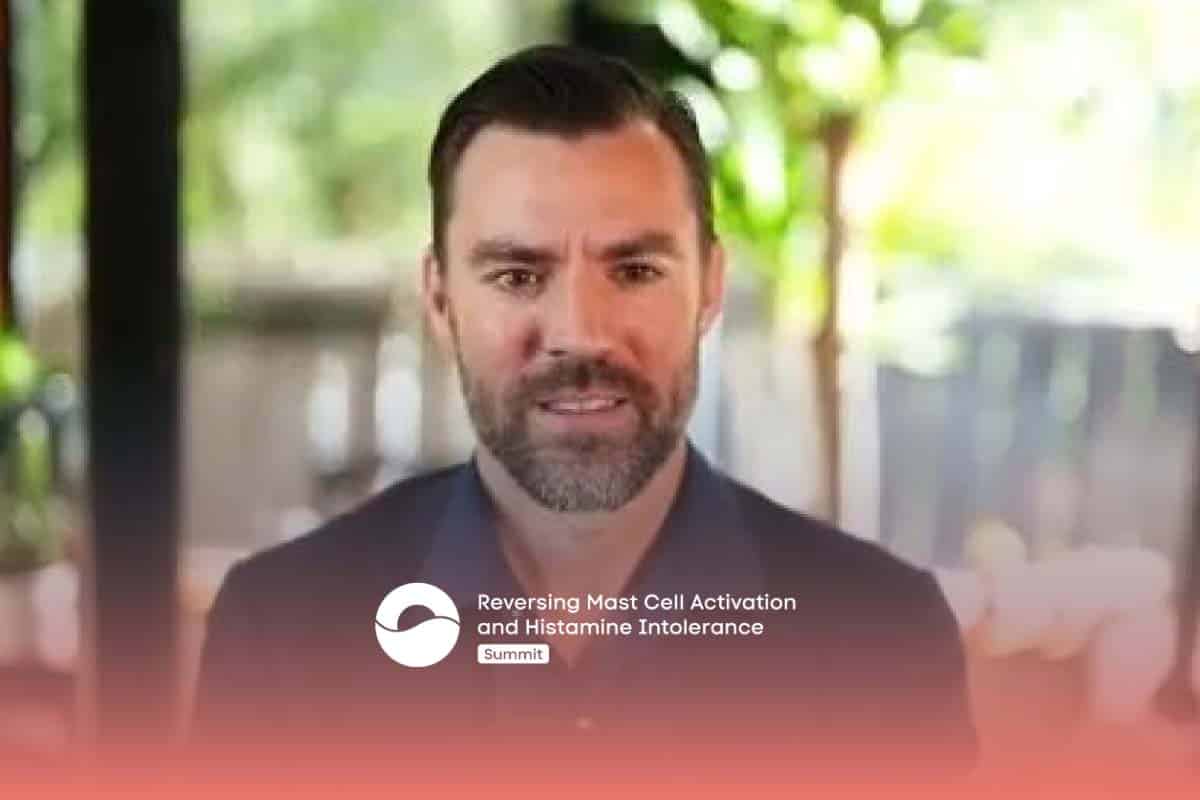

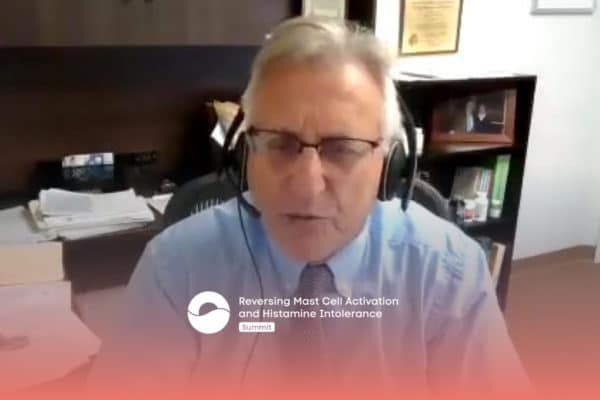
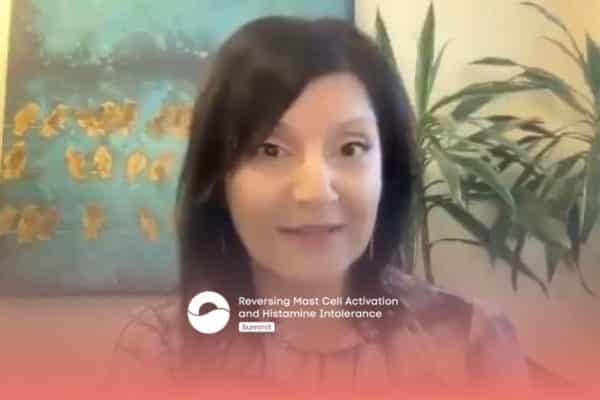
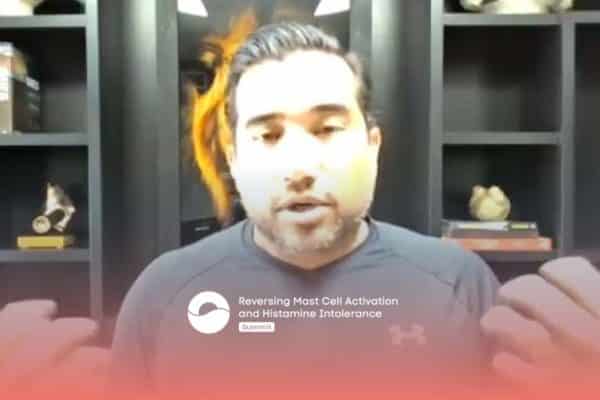
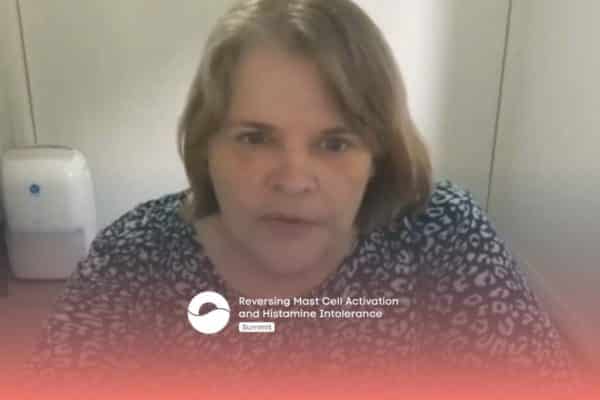
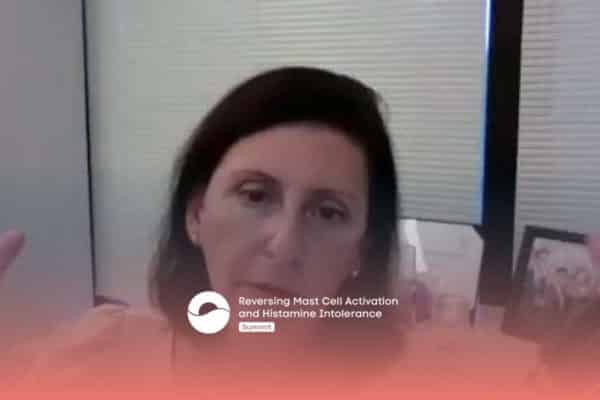
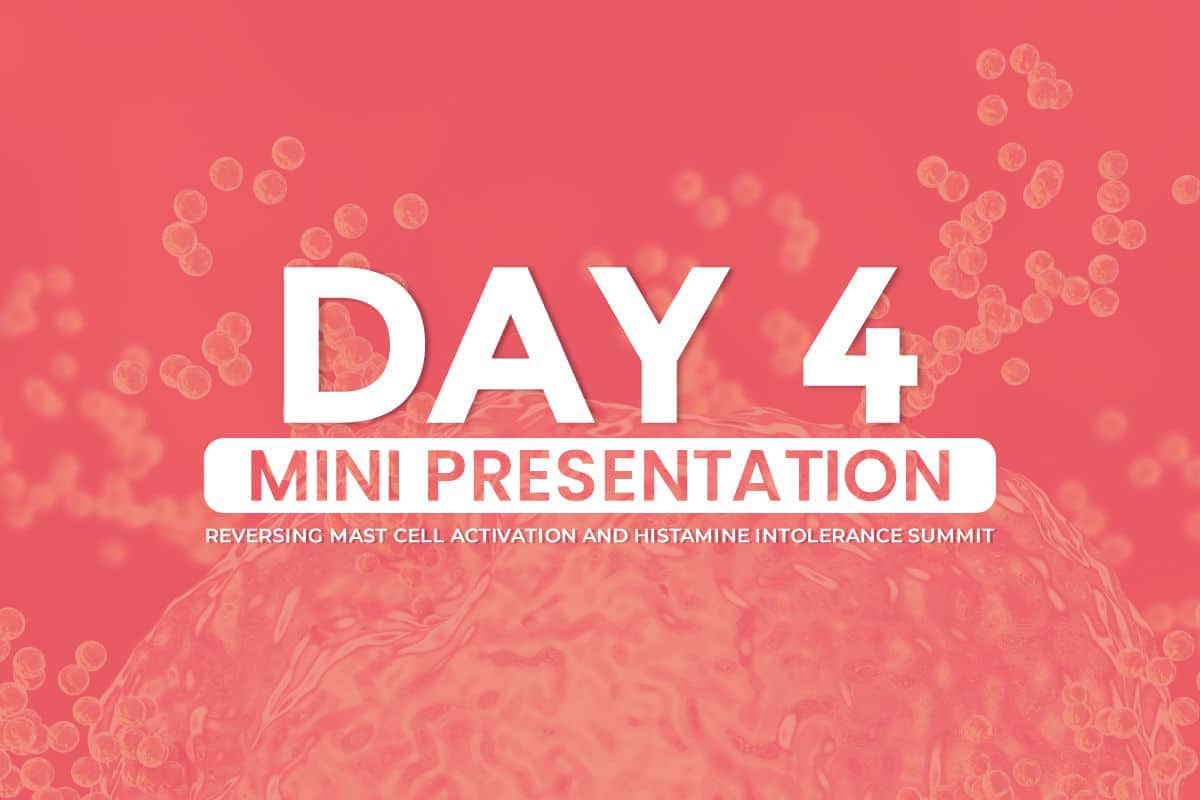


Once again, I can’t believe how similar our paths have been, Beth. I also fell off a monkey bar and hit my head!